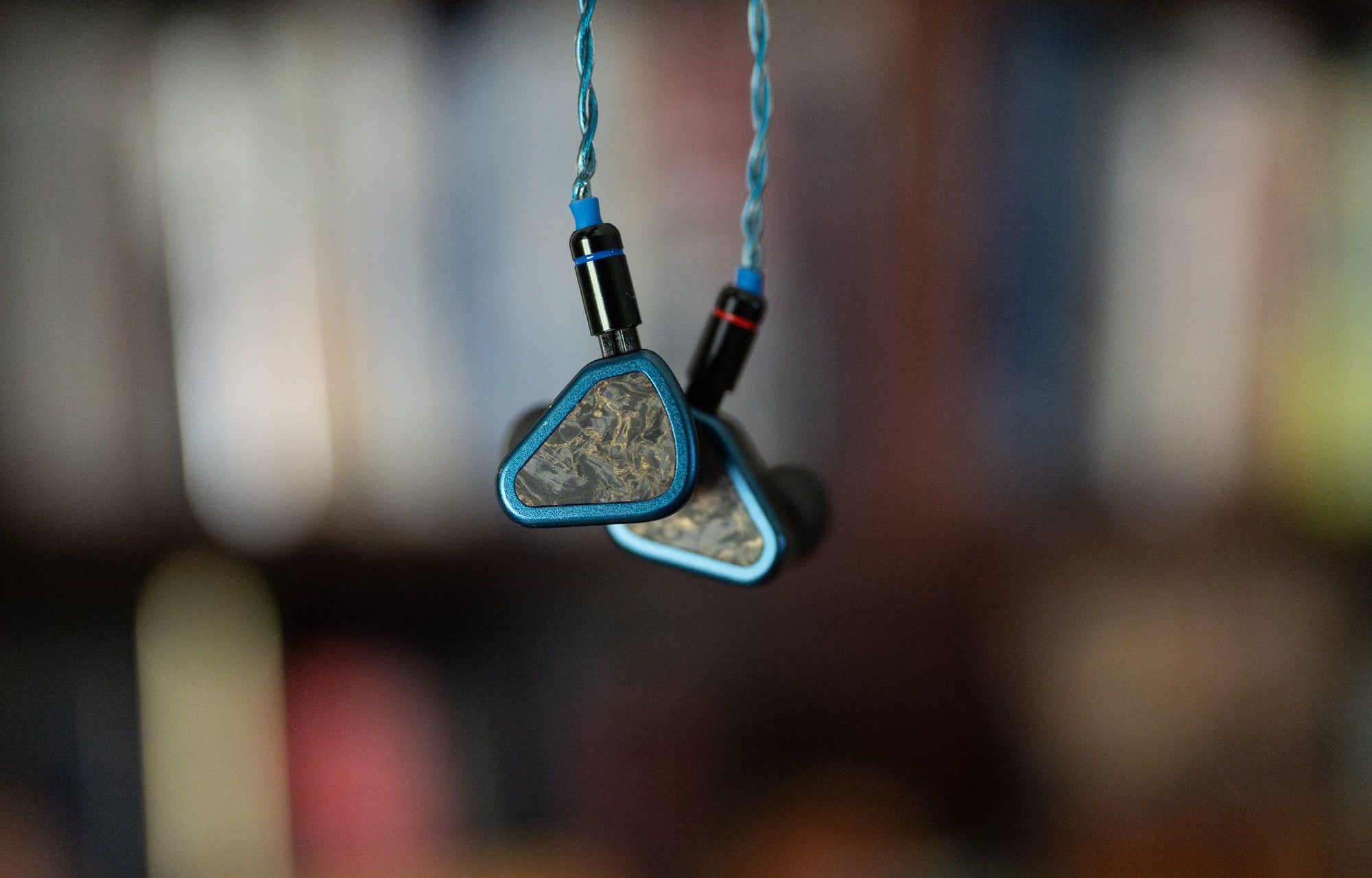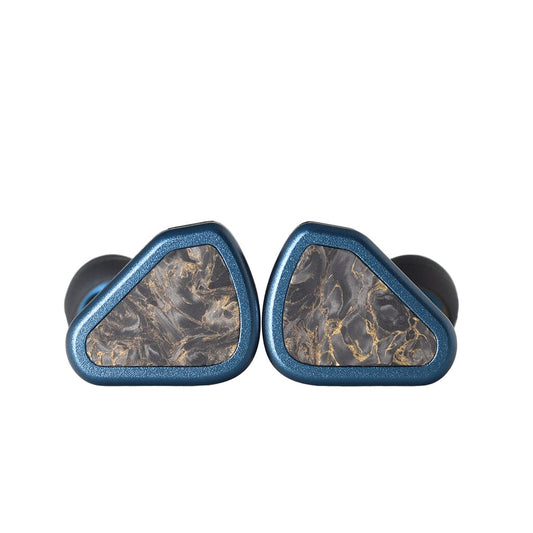Symphonium Titan Review - Precog's Take
The Titan is Symphonium's entry into the quickly emerging category of IEMs that go for massive bass boosts with otherwise mostly neutral tuning. How does it stack up against the competition?

Introduction
The IEM world is constantly in flux. Gone are the days where a ‘basshead’ IEM would have, in reality, been little more than a muddy mess. But while basshead IEMs have seen much progress over the last couple years, many of them still try to emulate V-shaped tunings (where the treble and upper-midrange are also emphasized).
Comparatively, the concept of powerful, distinct, yet controlled bass and an otherwise neutral response is something not uncommon to the speaker world due to how monitors are often paired with subwoofers. And I’m talking about big bass, not ‘baby’ boosts of under 10dB. In the IEM world, though, this was a foreign concept up until a couple years ago when FatFreq, a Singaporean brand, released the Maestro Mini IEM. I recall hearing this IEM in Singapore and being absolutely astonished.
Now another Singaporean brand, Symphonium Audio, has released their own basshead IEM into the fray. The Titan is a 1DD/2BA configuration that clocks in neatly under $1000 USD. I’ve had positive things to say about Symphonium’s IEMs in the past, so let’s take a closer listen at whether the Titan continues the trend.
This unit was loaned for review and it will be returned at the end of the review period. As always, what follows are my honest thoughts and opinions to the best of my ability.
Symphonium Audio Titan In-Ear Headphones
$999.00
What we like
What we don’t like
Source & Drivability
All critical listening was done off of my iPhone 15 Pro with the Apple dongle and a Questyle M15 with lossless files. The stock cable and silicone tips were used. I had no issue hitting my usual listening volume of ~70dB with either source, although the Titan does take significantly more power to drive than most IEMs. If you would like to learn more about my listening methodology, then I would encourage you to check out this page.

The Tangibles
I received a pre-production unit, so I do not have all the accessories that the production Titan will come with.
The Titan uses Symphonium’s industrial, triangular design. Admittedly, I’ve not been the biggest fan of this design in the past. While I love the sound of the Helios, the large size of the shell and nozzle are undoubtedly its Achilles Heel. Symphonium has made strides in making this design more ergonomic, and the Titan continues this trend. It’s size is a lot like the Crimson and, unlike the Crimson, the Titan finally has a pressure relief vent that’s cleverly hidden near the connector pins. I had no issues fitting or wearing the Titan for a couple hours of listening.

The Titan's cable is an Altalune Audio Neptune in 0.78mm. Like the other Altalune cables, this cable is fairly well-behaved and exhibits minimal microphonics. A feature that has been making its way into the cable market is the addition of interchangeable terminations, and this cable is thankfully no exception. Swapping terminations is achieved by unscrewing the cylinder (which acts as a lock) around the termination point and then plugging/unplugging the termination.

The included puck case seems to be a new model. It's slightly shorter than some previous ones in terms of the depth, but it's also a little wider. The threading on this case (at least the one I received) is smooth and short enough that you can give it a quick twist, let go, and it'll complete the rest of the seal on its own.
Sound Analysis
Above is a graph of the Symphonium Titan measured using the ear canal simulator of the B&K Type 5128 (designated Type 4620). It is calibrated to the 4620 + Human Diffuse Field HRTF. The bounds behind the measurement are the bounds of preference outlined in the existing speaker and headphone literature from Harman.
Of course we need to talk about the bass first. Amongst IEMs I have heard that go for an ultra-clean vs. a warmer bass boost, the Titan falls closer to the latter due to it having some extra oomph in the 300-400Hz region. And of course ~15dB of sub-bass at 20Hz!
Subjectively, the Titan’s bass is more difficult to judge. It has a slightly ‘stretched’ quality to its transients that simply comes with this much bass quantity. But most interestingly, it sounds quite ‘fast’ in terms of the way notes attack and decay with a clear distinction between each bass note. Subsequently, it sounds highly dynamic for a sense of explosiveness while lacking some of the ‘bloom’ some listeners might expect from conventional basshead IEMs. This is the bass for listeners who want bass that grips them and grabs their attention.
Something I appreciate about the Titan’s midrange is that it has a more aggressive rise from 1-3kHz compared to some other IEMs. This allows vocals, especially female vocals, to cut through in the mix. Past 3kHz, there is a slight slope to the Titan’s upper-midrange. I wish this region was slightly more filled-in; it doesn’t negatively impact the midrange itself - mostly just lending itself to a slightly more musical quality on vocals, which can be desirable for this type of tuning - but it has implications moving upwards.
That in mind, the treble of the Titan can be hit or miss to my ears. Due to the recession at 4kHz, it’s heavily concentrated at around 5kHz which leads to a certain screechiness on percussive hits. From 5-15kHz, I find it to be mostly filled-in before tapering off quite smoothly. This treble response works for the most part, but I find it to lean toward the drier and more clinical side. In general, my diagnosis is that I would’ve preferred more upper-treble, or more energy at 4kHz, to balance out the emphasis on lower-treble.

Technical Performance
For a sense of technical performance, I hear the Titan as being ‘good but not great’. It has decent resolution from the forwardness at 1-3kHz and the peak at 5kHz; however, I wish it had a tad more bite in the upper-treble. The staging on it leans toward the more average to intimate side. Ultimately, these bottlenecks are to be expected of an IEM with this much bass.
However, it’s difficult to describe the transient behavior of the Titan as it does not sound like a conventional hybrid. To go back to my comments on the Titan’s ‘quicker’ bass, the bass sounds in-sync with the midrange and treble unlike some other hybrid IEMs that might sound more disjoint. Transients have more of a quick, ‘slammy’ leading edge; possibly as a result, I find the timbre of the Titan to lean toward the drier side. The upside of this dryness is that the Titan sounds impressively clean for the amount of bass it packs.
In general, I’ve found that the Symphonium IEMs never sound quite like I think they will based on measurements - mostly in a good way. I have to tip my hat because it's clear that the folks at Symphonium are pushing the envelope, and enjoy subverting expectations, when it comes to balancing between good measurements and subjective technical qualities.
Comparison
The most natural point of comparison to the Titan would be the FatFreq IEMs. I only have the Maestro Mini on hand for direct A/B comparison. These IEMs share a lot of tuning similarities on paper. In practice, the most noticeable difference to me is that vocals on the Titan cut through the mix more clearly due to the forwardness at 1-3kHz; vocals sound somewhat clouded on the Maestro Mini. The bass on the Titan seems to hit faster and tighter; however, it sounds more dry in terms of timbre.
Above is a graph of the Symphonium Titan compared with the FATFreq Maestro Mini, measured using my clone IEC 60318-4 (711) coupler. It is calibrated to the 4620 + Human Diffuse Field HRTF, which has been altered to work with my 711 coupler. The bounds behind the measurement are the bounds of preference outlined in the existing speaker and headphone literature from Harman.
The FatFreq Scarlet Mini is another interesting point of comparison, but I’d have to do it from memory. The Scarlet Mini is basically more U-shaped: it has even more sub-bass than the Titan and it has quite a lot of upper-treble energy. It can truly shake your ears (if the Titan’s bass wasn’t already enough) but personally I found the treble to be too spicy on certain tracks. I prefer the Titan but for listeners who want to emulate a club-like experience, the Scarlet Mini is probably closer to that.
Above is a graph of the Symphonium Titan compared with teh FATFreq Scarlet Mini, measured using the ear canal simulator of the B&K Type 5128 (designated Type 4620). It is calibrated to the 4620 + Human Diffuse Field HRTF. The bounds behind the measurement are the bounds of preference outlined in the existing speaker and headphone literature from Harman.
Ultimately, all three of these IEMs are niche and I can see them trading blows, although the Titan definitely takes the lead in terms of build quality.
The Bottom Line
There are a couple factors that I try to use when making a judgment call on an IEM. Namely they are whether an IEM 1) positions itself advantageously in the market by offering newfound value or something novel and 2) whether it’s a tasteful rendition of the sound it is trying to capture.
On the first front, I think that the Titan definitely offers something unique. Despite measuring similarly to the aforementioned FatFreq IEMs, it sounds quite different and it clearly has Symphonium's own touch applied - both in terms of sound and the physical build. To the second factor, I think the Titan hits pretty close to the mark despite not entirely meeting my preferences.
It's important to remember that any IEM that leans this far into one frequency - such as bass in the Titan's case - is niche. I don't envision the Titan as being daily driver material for most listeners (including myself, as my listening sessions with the Titan were usually a couple hours maximum before switching to something more balanced). But at $1000, it makes a great complement to a collection and a solid option for listeners who want to scratch that basshead itch.

